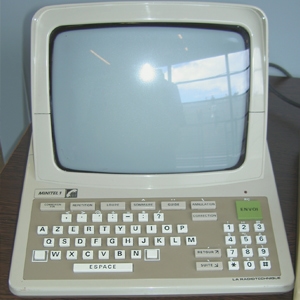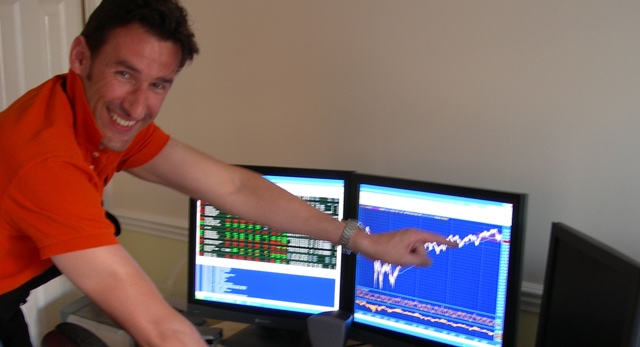
The story of online trading platforms really starts May 1, 1975, when the Securities and Exchange Commission broke the Wall Street cartel and eliminated the practice of fixed brokerage commissions. If you went to a retail brokerage, there was a human who helped you open an account, picked your stocks and executed the trades for you—and charged the same hefty commissions as any other broker.
“There was no reason for them to compete on price; they competed on service, research and stock tips,” explained James J. Angel, associate professor of finance at Georgetown University’s McDonough School of Business. “After [the 1975 SEC change], commissions became competitive.” The age of the discount broker was born, along with a push to make trading cheaper and easier.
In 1981, France’s Minitel system enabled a precursor to “online trading.” Users were given terminals that connected over telephone lines, which they could use to look up phone numbers, purchase train tickets and even buy stocks. (The Internet eventually pushed out Minitel.) But only a year later, North American Holding Corp’s NAICO-NET—the first full-service, consumer-oriented electronic system for trading stocks, commodities and mutual funds via computer—went online, connecting traders all over the world. The floodgates opened. In 1984, Fidelity Brokerage Services, the US’s second-largest discount broker, began offering stock and option trading, later adding mutual funds and other investment vehicles. Fidelity relied on technology from a computer services company called Trade*Plus, whose platform was in use on AOL and CompuServe, and which gave birth to E*Trade Securities.
At first, online platforms were mostly in the US. They were marketed to retail investors, for whom they brought the biggest changes. It gave them much greater access to the stock market and opened them up to the phenomenon of day trading.
“For retail traders, it was a revolution,” says Joel Hasbrouck, professor of finance at New York University’s Stern School of Business. “Commissions went down by a factor of 10, from around $50 a trade to $5. It was a big drop. And when you make trading less expensive, people trade more. The retail traders certainly did.”

Online brokers offered a new model: They weren’t big on handholding or advice, and certainly not on personal service. But they did execute orders at a very low cost. For a certain kind of customer—who didn’t need to be told how to invest—that was the only thing that mattered. “We like using our computer to make our stock transactions because there’s no one calling us on the phone and bothering us,” said Evelyn Merwin, a retired certified public accountant in Canon City, Colorado. One of the earliest online traders, to Inc. magazine in 1984. “We can price some stocks in the evening if we want to and initiate the transaction when the stock market opens the next morning.”
It was the beginning of the technology boom, and online trading firms sprouted like mushrooms. In addition to Ameritrade and Schwab, there was E*Trade, Scottrade, Suretrade and Datek. In 1995 there were only 12; but by 1998, more than 50 brokerage houses were offering online trading.
“Online trading democratized and demystified the trading process,” says Hasbrouck. “It also made it a lot more accessible to retail investors who want to trade their own stocks.”
Since etrading appeared in the 1980s, market crashes and volatility have made some investors less enthusiastic about trading stocks on their own, driving them back to human financial advisors. Even so, online trading platforms have dramatically changed the world of investing from proprietary broker-driven trading to open-access, consumer-driven trading. What’s next? Trading is moving from desktop to mobile, of course. And advisory services are ripe for a comeback—this time, with advice by robots and algorithms.



